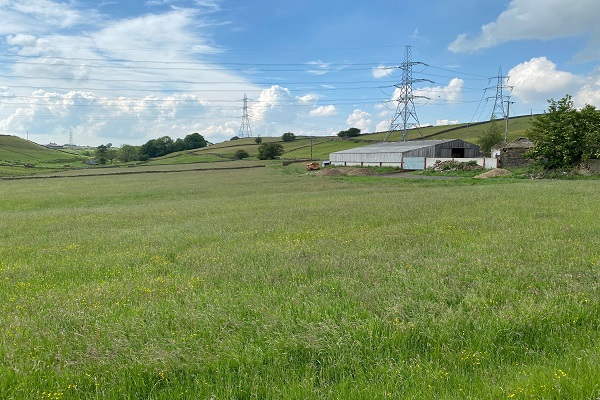The shifting landscape for rural property to let
Rural estates provide a significant amount of rented housing in the countryside, but the prospect of new legislation could have a big impact on the sector
A race for rural rentals has seen average rents rise and void periods at an all-time low over the past couple of years. But the cost-of-living crisis and the prospect of major legislative changes means landlords are now facing some big challenges.
The changes to the law focus on two key areas: ensuring a fairer deal for tenants and improving energy efficiency. The details vary by country, but in England, the Renters Reform Bill aims to give tenants more security of tenure and improve housing standards. Of particular note is the proposal to abolish Section 21 which means landlords will no longer be able to evict tenants without the grounds to do so.
Sarah Roberts, a director at Strutt & Parker specialising in rural residential lettings, points out that landlords in Scotland (where Section 21 was removed in 2017) have on the whole coped with that change. She sees the proposal to apply the Decent Homes Standard (DHS) to private rented properties for the first time as potentially more significant. The DHS for the social rented sector, which has been in place for several years, requires kitchens and bathrooms to be less than a certain age. In a recent consultation the government indicated that for privately rented homes this requirement should be removed, but at the time of writing the outcome of the consultation was unknown.
Many rural properties have old bathrooms and kitchens, so without this crucial amendment landlords could face a considerable outlay, and not just in terms of materials and labour. ‘If the property is tenanted, the landlord has to provide a facility while the renovations are carried out, so that would have a cost impact too.’
In Wales, landlords are now required to ensure homes are ‘fit for human habitation’ which means following a list of obligations to ensure their property is in good repair. These changes bring Wales’ legislation to a very similar standard to England. Unlike in England, no-fault notices to end agreements will remain in place, but the minimum notice period is extending from two months to six.
While this has little impact for landlords with long-term tenants, there is a valuation impact, says Adam Jaeban, senior associate director in the Chester office of Strutt & Parker. ‘If the property is mortgaged, or a landlord is thinking about leveraging the asset, the reduced ability to gain vacant possession will impact the value of a property. This may be an important consideration in a typical buy-to-let portfolio, although it will have a more limited impact on many rural landlords who have no intention of selling.’
Surprises for private landlords in Scotland
In Scotland, landlords have been dealing with a series of unexpected measures. On 6 September 2022, Scottish government announced it was putting emergency legislation in place to introduce a rent freeze and ban evictions (with limited exemptions), in response to the cost-of-living crisis. This legislation is set to be in place until at least 31 March 2023. Certain emergency measures introduced during the pandemic have now also been made permanent: in particular, the removal of any mandatory grounds for eviction, with all evictions now at the discretion of the First Tier Tribunal.
These new measures bring challenges. ‘Assurances were given that where the eviction process is required the process would not take more than eight weeks, but it is taking much longer than that now,’ explains Gillian Ferguson, associate director in the Inverness office of Strutt & Parker. ‘A rent freeze is also particularly concerning for rural landlords, since most rural tenancies tend to be long-term, with no opportunity to keep rents at market value that a change of tenancy can allow.’
Another change made permanent in Scotland is for landlords to comply with pre-action requirements when evicting a tenant. This is a very positive move, says Ferguson. ‘It’s a good idea to engage with tenants who are having issues early on, anyway.’ In terms of finding new tenants, Ferguson stresses the value of best practice and due diligence. ‘When it comes to initial choice of tenant, undertake all of the credit and reference checks that are available, and a good tip is to search the decisions of the First Tier Tribunal to see if potential tenants have had issues in the past.’
The ongoing shortage of rural property to let
In this sense, the current shortage of rental properties does work in a landlord’s favour. Across the UK, properties being advertised to rent are garnering considerable interest, giving landlords the luxury of being able to choose their tenant.
However, landlords in Scotland are also grappling with uncertainties around the proposed ‘New Deal for Tenants’. The proposals aim to give tenants more rights, such as the right to keep pets or personalise their rental property. If passed, this could cause issues for landlords, and it’s not clear yet whether there will be insurance policies that offer landlords protections. ‘We’re limited to the deposit landlords can take to two months’ rent, which often doesn’t cover damage or changes when people have personalised property.
‘Landlords do want to do the things that Scottish government is pointing towards,’ Ferguson adds. ‘But they just need to have some further protection for when things do go wrong: we’re not sure how that will be reflected in legislative changes just yet. We hope the Scottish government will listen to the feedback from those involved in the rented sector.’
Raising the ratings for rural property
Perhaps the biggest concern for landlords everywhere is proposed changes in the Minimum Energy Efficiency Standards (MEES). The Scottish Government has consulted on a standard that would require an EPC of band C at change of tenancy from 2025, with all properties in the private residential let sector to be at a rating of C by 2028. It is thought that these standards will be confirmed in the near future. For England and Wales, the minimum rating is as yet unclear, but the expectation is also for a C rating to be required for new lets by 2025, and for ongoing lets from 2028. However, it’s important to emphasise that this is not yet set in stone.
Failure to reach this rating could bring penalties of up to £1,000 per property in Scotland, and as much as £30,000 in England and Wales. Exemptions will be possible, but, again, the details across the UK are as yet unclear. The implications for rural property are considerable. According to the Country Land and Business Association (CLA), 75.6% of homes in rural areas don’t meet the proposed C rating. This is not surprising. Most rural properties are old and built for airflow.
They are naturally draughty, without wall cavities, and around 1.5 million homes in the UK are off the gas grid with kerosene oil boiler systems. Many rural properties are also listed buildings – constructed, for example, from stone and slate.
EPCs aren’t designed for rural real estate
As CLA property and business policy adviser Avril Roberts explains: ‘EPCs don’t work very well for traditional buildings. The methodology that sits behind them is more tailored to a modern construction and some of the measures may be wholly inappropriate. So there are cases where, even if a landlord were to implement all recommended appropriate measures, they may still not meet the required EPC rating.’
The other issue with existing EPC methodology is that they are not just based on efficiency, but also on a cost measure. Alexander MacFarlane, building surveyor at Strutt & Parker points out: ‘If a landlord were to replace an oil boiler with an air or ground source heat pump, the complexities of how EPCs are calculated could actually push the EPC score down, not up.’
Either way, landlords could be staring down the barrel of potentially considerable investment. The CLA says its many members are reporting investment of up to £30,000 to reach EPC C being required, with some spending hundreds of thousands. Exemptions to the MEES requirements are expected, but, again, the details of these are not confirmed. In England and Wales, the expectation is for a spending cap of £10,000 per property to be implemented, but this may reset every five years. To qualify for the exemption, landlords will have to prove that the work required would exceed the spending cap. In order to do that, they are likely to need three contractor quotes, which are not always easy to obtain in rural areas, particularly if contractors are unwilling to quote for work they know they will never get.
A waiting game for private landlords
The considerable uncertainty around key details of the MEES legislation is unsettling. For Sarah Roberts, the most sensible approach for landlords is simply to watch and wait. ‘Since we don’t know what the changes are, I wouldn’t advise significant up-front investment now, unless absolutely necessary. When the legislation is passed, then landlords can plan how they’re going to maximise energy efficiency across their portfolio at the minimum cost expenditure. We will then know what grants are made available to support landlords as well.’
She points out that works carried out now would not qualify for whatever the exemptions will be. Not only that, each time the legislation changes, the EPC criteria changes with it. So, works carried out now may move a property to a C rating, but that may not be the case if the scoring system changes.
Does this mean landlords should do nothing? No, says Roberts. ‘I would always advise a landlord to try and make a property as energy efficient as they can in a realistic and cost-effective manner.’ If a property becomes vacant, for example, landlords can take the opportunity to make relatively inexpensive but significant improvements, such as adding loft or boiler insulation, or temporarily blocking up a fireplace. ‘It depends on the landlord’s financials, but in most cases, spreading the cost year-by-year may ensure they aren’t subsequently faced with a large up-front investment once the EPC requirements come in.’ An exception to this may be a landlord choosing to upgrade all at once to benefit from economies of scale and a lower unit price.
For MacFarlane, upgrades should be as much about reducing a house’s carbon footprint as meeting EPC requirements. For example, installing air or ground source heat pumps requires extensive and costly retrofitting that is often inappropriate for period properties. Instead, landlords could consider getting a conversion kit for existing oil boilers to run on biodiesel. ‘This is inexpensive, it’s more environmentally friendly and doesn’t have the pollution concerns of domestic kerosene. In some instances, you’d be better off using that than you would be installing an air source heat pump.’
MacFarlane reiterates the potential impact of a structure being old or listed. ‘There’s no off-the-shelf solution,’ he explains. ‘It’s important to ensure that a building’s construction detailing is taken into consideration when planning improvements. These older buildings are designed to breathe, so you can actually end up creating latent defects by putting too much insulation in, for example. If landlords aren’t getting good, independent advice, they could find themselves thinking they’ve satisfied one problem by meeting the EPC requirement but end up with condensation and significant problems five years down the line.’
Could there be a rural property sell-off?
The prospect of high investment costs is prompting some landlords to consider reducing their portfolio, either to divest of properties that are too problematic, or to fund renovations on the rest of their portfolio. A survey by the Scottish Landlord Association found 34% of its members were planning to reduce the size of their residential sector portfolio over the coming decade. If rental properties become owner-occupied or second homes, this could have significant implications for rural communities.
Here again, Sarah Roberts advises caution: ‘We don’t know for sure what’s coming down the pipeline. So, if a landlord chooses to sell, they need to make sure it’s because they want to sell and not in anticipation of something that may not materialise.’
To discuss any aspect of this article contact Sarah Roberts (England), Adam Jaeban (Wales), Gillian Ferguson (Scotland) or Alexander Macfarlane. This article first appeared in our latest issue of Land Business. For more download the Autumn 22 edition of Land Business.






